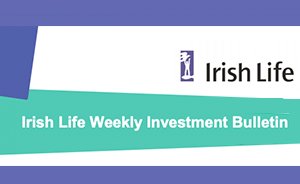Entrepreneurial Relief in Ireland
Entrepreneurial relief in Ireland is an essential tax provision designed to incentivize and reward entrepreneurs for their contributions to the economy. These initiatives make Ireland a compelling destination for entrepreneurs and investors seeking to establish and expand their businesses. It provides a reduced capital gains tax (CGT) rate on the disposal of qualifying business assets, thus encouraging investment, innovation, and the development of businesses. We will explore the intricacies of entrepreneurial relief, including eligibility criteria, the process of disposing of assets, and practical examples illustrating how CGT is calculated under this relief.
How Does Tax Relief for Entrepreneurs in Ireland Work?
Tax relief for entrepreneurs in Ireland is primarily designed to encourage investment and innovation by reducing the tax burden on business owners. Entrepreneur Relief allows for a reduced rate of Capital Gains Tax (CGT) on the disposal of qualifying business assets. As of 2024, entrepreneurs can benefit from a 10% CGT rate on gains up to €1 million in their lifetime. To qualify, individuals must have held at least 5% of the company’s shares for a continuous period of three years and must have worked as a full-time director or employee in the business for three of the five years preceding the disposal.
What Are the Startup Tax Incentives?
Ireland offers several startup tax incentives designed to support new businesses during their critical early stages. The Startup Relief for Entrepreneurs (SURE) is one such initiative. It provides tax refunds for new companies in their first three years of operation, while allowing individuals to reclaim up to 41% of their total investment from income tax paid over the previous six years. Eligible startups can reclaim Corporation Tax paid on trading profits and chargeable gains, up to a limit of €100,000 per year. This relief is available to those who leave employment to start their own business.
How Can I Qualify for Entrepreneurial Relief in Ireland?
To qualify for Entrepreneurial Relief in Ireland, entrepreneurs must meet specific criteria:
- Ownership Requirement: The entrepreneur must have owned at least 5% of the company’s shares for a continuous period of three years before the sale or disposal of the business assets. You must also have been a full-time working director or employee of the business for three of the five years prior to the disposal. This means you should have been involved in the day-to-day operations of the business during this period.
- Employment Requirement: The individual must have been a full-time working director or employee of the company for three out of the five years preceding the disposal.
- Business Type: The business must be a trading company, excluding those primarily engaged in investment activities. The relief does not apply to investment or property rental businesses.
- Lifetime Limit: The relief applies to gains up to a lifetime limit of €1 million. Once you reach this limit, any further gains will be taxed at the standard CGT rate.
Entrepreneurs should also ensure compliance with all tax filing and payment obligations to avail themselves of these reliefs effectively.

How can I reduce my Capital Gains Tax (CGT) using Entrepreneural Relief?
Entrepreneurial relief is governed by Section 597AA of the Taxes Consolidation Act 1997. It offers a reduced CGT rate of 10% on the disposal of qualifying business assets, rather than the standard CGT rate of 33%, up to a lifetime limit of €1 million in gains. This relief is intended to support entrepreneurs by reducing the tax burden associated with the sale of their businesses or shares.
Calculating CGT under Entrepreneurial Relief
Here are several examples to illustrate the calculation of CGT under entrepreneurial relief when disposing of qualifying assets:
Example 1: Sale of Shares within the Lifetime Limit:
-
- Scenario: Emma, an entrepreneur, sells her shares in a qualifying trading company for €900,000. She originally purchased the shares for €100,000, resulting in a gain of €800,000.
- Calculation: Since the gain of €800,000 is within the €1 million lifetime limit, it qualifies for the 10% CGT rate.
- CGT Calculation: €800,000 * 10% = €80,000.
- Result: Emma pays €80,000 in CGT on the sale.
Example 2: Sale of Business Assets Exceeding the Lifetime Limit:

- Scenario: Liam sells his business, realizing a gain of €1.2 million. He has not previously used any of his entrepreneurial relief.
- Calculation: The first €1 million of the gain qualifies for the 10% CGT rate, and the remaining €200,000 is subject to the standard 33% rate.
- CGT Calculation: (€1,000,000 * 10%) + (€200,000 * 33%) = €100,000 + €66,000 = €166,000.
- Result: Liam pays €166,000 in CGT on the sale.
Example 3: Partial Use of Entrepreneurial Relief:
-
- Scenario: Sarah has previously disposed of qualifying assets and utilized €500,000 of her lifetime limit. She now sells additional shares, resulting in a gain of €700,000.
- Calculation: She has €500,000 remaining of her lifetime limit, so the first €500,000 of the gain qualifies for the 10% rate, and the remaining €200,000 is taxed at 33%.
- CGT Calculation: (€500,000 * 10%) + (€200,000 * 33%) = €50,000 + €66,000 = €116,000
- Result: Sarah pays €116,000 in CGT on the sale.
Example 4: Multiple Disposals over Time:
-
- Scenario: John has previously sold business assets with gains totaling €800,000, utilizing €800,000 of his lifetime limit. He now sells additional assets, realizing a gain of €400,000.
- Calculation: He has €200,000 remaining of his lifetime limit, so the first €200,000 of the gain qualifies for the 10% rate, and the remaining €200,000 is taxed at 33%.
- CGT Calculation: (€200,000 * 10%) + (€200,000 * 33%) = €20,000 + €66,000 = €86,000
- Result: John pays €86,000 in CGT on the sale.
Strategic Considerations for Entrepreneurs
Entrepreneurs should consider several strategic aspects to maximize the benefits of entrepreneurial relief:
- Timing of Disposals: Planning the timing of asset disposals can ensure that the gains are within the lifetime limit, maximizing the benefit of the 10% CGT rate.
- Succession Planning: For family-owned businesses, careful succession planning can facilitate the transfer of assets in a tax-efficient manner.
- Professional Advice: A financial advisor can provide tailored strategies to navigate the complexities of entrepreneurial relief and other tax provisions.
Conclusion
Entrepreneurial relief in Ireland is a vital tax incentive that supports entrepreneurs by offering a reduced CGT rate on the disposal of qualifying business assets. By understanding the legal framework, eligibility criteria, and strategic considerations, entrepreneurs can effectively utilize this relief to minimize their tax liabilities and enhance their financial outcomes.
As the landscape evolves in 2024 and beyond, staying informed about available reliefs and programs will be crucial for maximizing the benefits of Ireland’s entrepreneurial environment. This is why it is important to engage with a financial advisor on an ongoing basis to keep you updated on upcoming changes.
E.&O.E.
Speak with a Financial Advisor:
Fill out your details and inquiry below, and one of our Qualified Financial Advisors will get back to you shortly.


